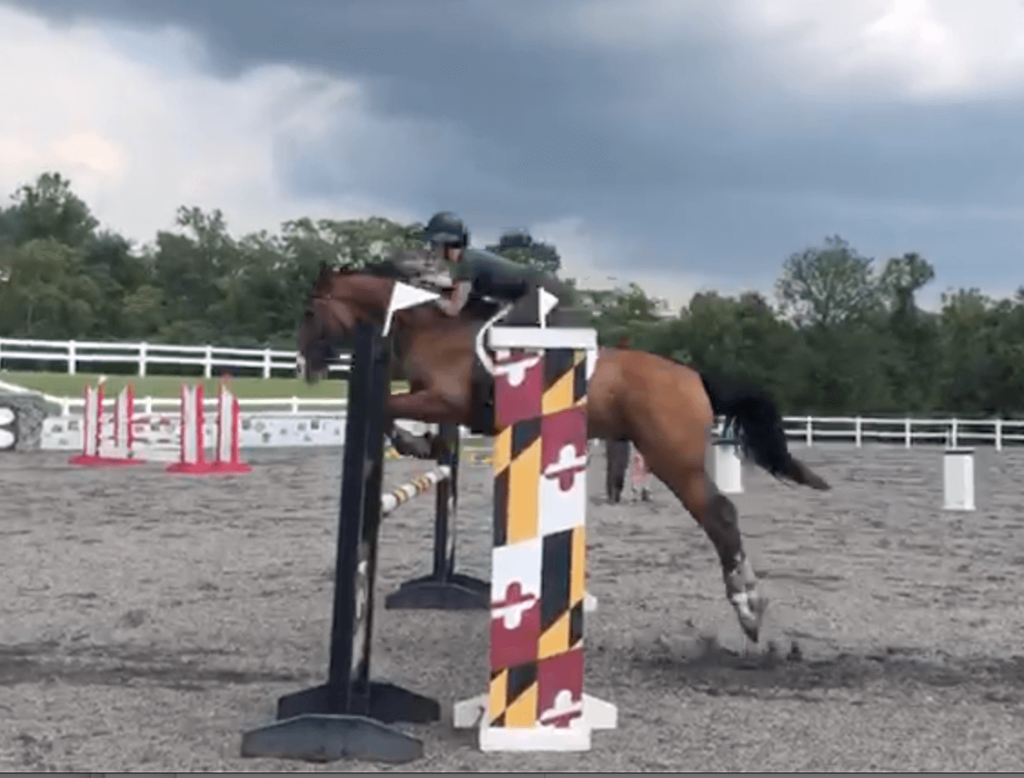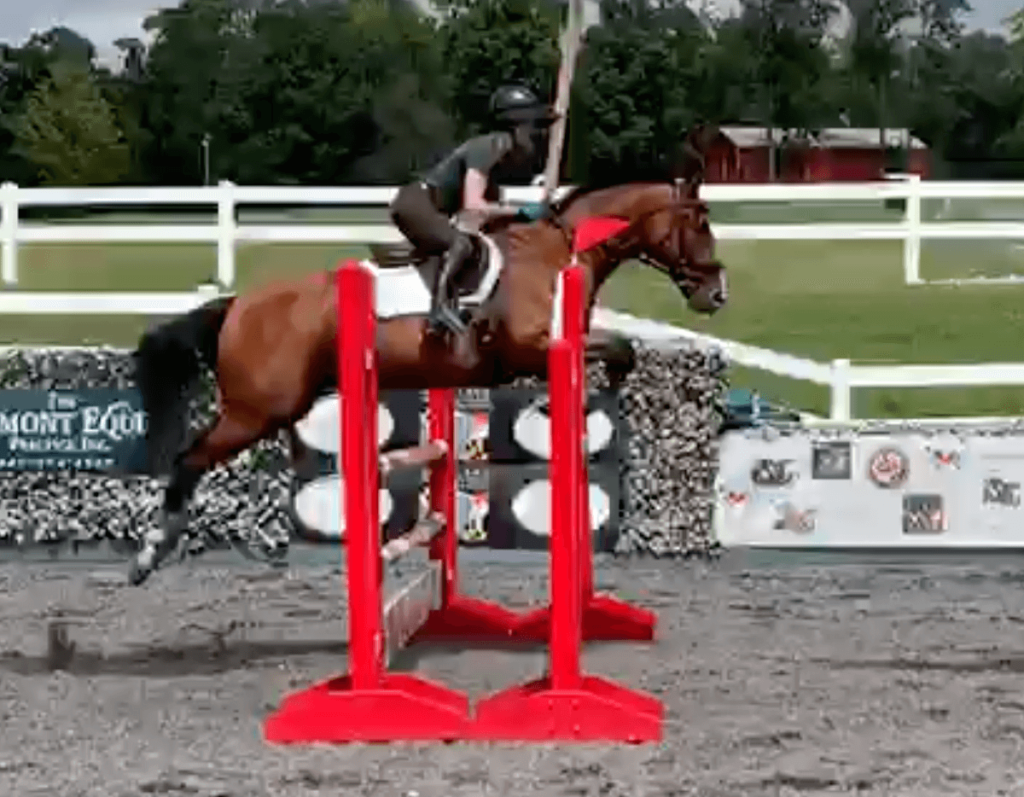
Best of JN: Maintenance Programs — How Do You Balance Hope With What Really Works?
“The basics are there: good feed, a farrier who I consider a genius, an excellent vet who has known me and my horses for many years now, and a barn manager and trainer who I trust. Everything else is up to me, as I wade through what is out there and try to sort out what my horses might need. “
By Susan Glover
Hock injections. Ice boots. Supplements for not enough energy, for joints, for too much energy, for hooves, for coat, for gut health. PEMF, Magna Wave, massage, acupuncture, chiropractic, Aquatread, Theraplate. Back on Track, Draper Therapy, Rambo Ionic…the list of things we can do for our horses and their health goes on and on and on.
One of the most difficult parts about being a horse owner is sorting through what is available to help our horses perform at their best. The other half of that is figuring out what is needed and what just makes expensive pee, in the case of supplements, or an over-priced dust collector, in the case of the various machines and horse clothing and everything else that is out there. It’s especially difficult because a) horses don’t speak English, so we can’t ask them what is wrong (unless one believes in animal communicators, which the data do not, so I don’t, either); and b) the marketing is SO GOOD.
Who wouldn’t want to use all of the fancy stuff out there to give our beloved equines the shiniest coats, the strongest hooves, the best pre- and post-workout therapies, the healthiest everything? Big Deal Rider so-and-so uses only this supplement for all of her horses and look at how much she wins! Winning Show Barn X puts all of its horses on Therapy Y Machine and see how wonderful they look! What kind of irresponsible, cheap monster are you that you won’t shell out $$$ for something that will guarantee your horse’s health and happiness???
 Susan Glover on Steve at Loch Moy. Photo by Leah Fondelheit.
Susan Glover on Steve at Loch Moy. Photo by Leah Fondelheit.
When I got back into riding and bought my first “adult” horse I was seduced by the pre-packaged supplements and loaded my new gelding up with everything I thought he might need. Reality hit one day when I was talking to my trainer and he pointed out that the feed and forage my horse was on covered a lot of what I was supplementing, and that I might be better off saving my money for other things. “What you have now,” he pointed out, “is expensive pee.”
I am a researcher by trade, so with this wake up call I went to work. The problem is that a lot of things don’t have good evidence behind them, or it is all paid for and produced by the company promoting the product or therapy, adding potential bias to the results. There is a mountain of anecdotal data, which can be extremely compelling, especially when a horse owner is trying to find something to solve a problem. Look at all of those positive reviews! This MUST be worth trying!
Anecdotes don’t equal evidence, unfortunately, and with that it sometimes comes down to a simple cost-benefit analysis. Is this product cheap enough that if it doesn’t work, I’m not going to be out hundreds (or thousands) of dollars? Has it been around long enough to have a good idea about possible side effects? What does my vet think about it? That last one can be tricky because vets are trained, appropriately, to evaluate treatments and modalities professionally, with a scientist’s eye. Is something proven? Is it safe? Has it been tested appropriately?
Just because the person with the 24-year-old arthritic horse swears that feed-through joint supplement has made her gelding skip around the field like a 2 -year-old doesn’t mean you should feed the same thing to your horse. Just because everyone else is using magnetic therapy doesn’t mean it works, or will do what you want it to do. But maybe it will… and therein lies the rub: there is the HOPE that something will work, so shouldn’t you try it?
I’ve been thinking about this because my own path down the road of responsible horse ownership has been littered with supplements and therapies tried and then abandoned. Some of my horses responded great to this or that modality, and with others I saw or felt no change. The basics are there: good feed, a farrier who I consider a genius, an excellent vet who has known me and my horses for many years now, and a barn manager and trainer who I trust. Everything else is up to me, as I wade through what is out there and try to sort out what my horses might need.
 Susan Glover on Steve at Loch Moy. Photo courtesy by Leah Fondelheit.
Susan Glover on Steve at Loch Moy. Photo courtesy by Leah Fondelheit.
A few weeks ago I noticed that Steve, my jumper, was getting a little sticky behind in his changes. I’ve had Steve since he was five, and he almost never misses a lead. It’s one of his rules. We get our leads, come hell or high water (sometimes literally, in the case of the water!). He was also feeling a bit flat-footed, which is also highly unusual; Steve has suspension to spare most days. So, a couple, three missed changes behind, a bit less bounce, and then what seemed like increasing difficulty in getting him through his back, connected, reaching into the bridle. All of this added up, I thought, to my nearly 12-year-old horse needing his hocks injected. Or something.
I called my wonderful vet and he did a lameness workup. He was concerned about very mildly sore feet up front, and suggested I talk with my farrier, with whom he works all the time, about addressing that issue. This weather has been either flood or desert for their feet, and poor Steve’s fronts in particular had started crumbling. Otherwise, Steve flexed fine, had no back issues, his eyes are bright, his coat gleams, and so on. We talked about it for a bit and decided that given his age and what I was feeling, as well as the slight loss of topline (my vet has known Steve since I bought him, and he pointed out that topline has never been a problem before for my little Mack truck), we should probably do his hocks and see what that gave us. When Dr. Hess tapped Steve’s hocks, the fluid dripped out like water, much to our surprise. This indicates a lack of viscosity in the joint fluid due to inflammation.
Poor Steve! He’s such a baby if he loses a shoe, but here he had been suffering with sore hocks for who knows how long and I hadn’t noticed until he started missing a change or two behind. I felt terrible, but my vet kindly pointed out that nothing he’d seen had indicated Steve’s hocks were particularly sore until they were tapped. I slowly backed away from the guilt ledge and felt happy that Steve’s hocks were addressed. We also did a blood test to see if the topline loss was from something else, and luckily that came up all normal. Now on to Steve’s feet.
My farrier is incredible; he is older and has decades of experience, and yet he still reads and attends conferences and continues to learn and perfect his trade. When he first started doing my horses’ feet several years ago the slow, thoughtful changes he made paid off in better angles and better soundness, especially for my older then-eventer, now-retired horse Herbie. Barry is always happy to explain and educate, I am always a student, myself, and he adores Steve, so it’s a good relationship. When we talked before Steve’s trim Barry carefully went through what was going on with Steve’s crumbling, water-damaged fronts. He told me he could certainly nail another pair of shoes on, but that it was likely the hoof wouldn’t hold up even after the bottom rot was trimmed, and the feet would only get more sore as the hoof capsule continued to deteriorate.
The better option, we decided, was glue-on shoes, with a rocker edge. This would give Steve’s hooves time to grow out while being somewhat protected, make it easier for him to break over the front, and provide a bit of padding for his sore heels. It’s a temporary fix that we shouldn’t need past a few trims; generally Steve has great feet, and his hinds are perfect. It’s also an expensive one, but the cost-benefit analysis I did was very clear: no hoof, no horse. Sore feet are not only something no horse owner should put up with if they can address it, in this case they could make my very nice jumper unable to jump.
Okay, so what came out of all of this? Well, Steve feels amazing now. His usual bounce has returned, he is happily working over his back, and he is jumping great. To be honest, Steve always jumps great, which again is what makes all of this so hard. Tiny little changes for some horses can indicate big problems, and I guess it comes down to knowing your horse and trusting your gut. I’m not one to start throwing my money around because something feels off, but I’m also committed to my horse and if he isn’t quite right, I will do my best to hunt down what is wrong.
We use the tools we have available, and hopefully they are good ones. That’s about it, right? Do your horses have a maintenance program? How do you keep them feeling and working at their peak? How do you balance commonsense and professional experience with hope in a new therapy or product? For me, this is an ongoing struggle, but for now, at least, we are definitely on the right track!





